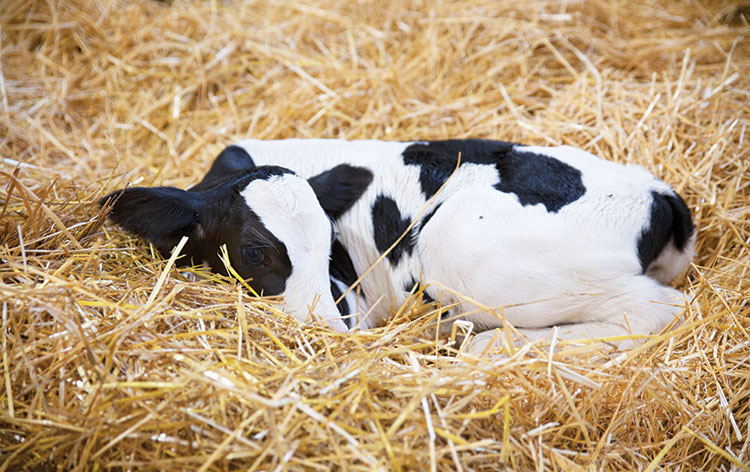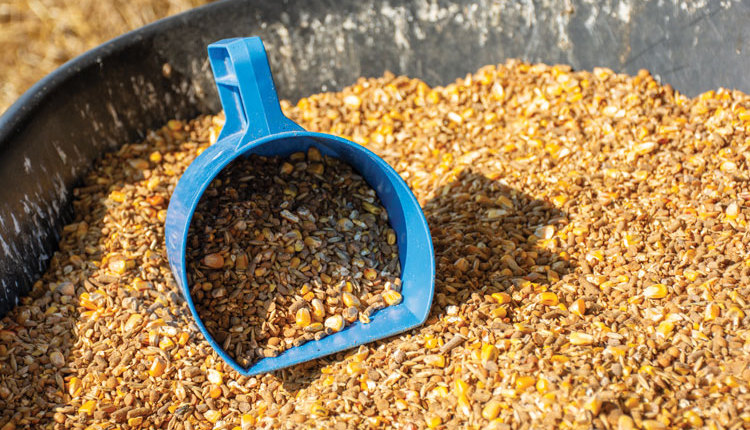
The 2020 American Dairy Science Association (ADSA) Annual Meeting was held virtually due to the pandemic. Over 2,300 people attended the online event. Four abstracts related to calves and heifers have been selected for a brief review.
Calfhood impacts lactation
Summary: The long-term effects of preweaning events on heifer conception rate and first-lactation milk production of calves raised on automatic calf feeders were evaluated using 9,099 calf records from a large dairy over a period of about four years. The average age at conception was 438 days, with a range of 308 to 631 days. On average, 280-day first-lactation milk was 20,490 pounds with a range of 1,568 to 29,414 pounds.
Daily gain from zero to 400 days had a weak negative correlation with conception age. Calves with higher daily gain conceived earlier than calves with lower daily gain. Further, cumulative 60-day milk consumption had a weak negative correlation with conception age, with a 156-quart reduction in milk consumption preweaning leading to an 11.6-day reduction in heifer conception rate. Preweaning daily gain (zero to 60 days) had a weak positive correlation with 280-day milk production.
Calves with a 60-day daily gain of 2 pounds (bottom 25%) produced on average 515 pounds less milk than calves with a daily gain of 2.64 pounds (top 25%). There was a 4,081-pound difference between calves in the top and bottom 25% of genomic milk index. Heifers with higher preweaning daily gain, greater milk consumption, and higher genomic milk indexes had reproductive and milk production advantages through their first lactation.
Take home message: These extensive data support that calf performance affects reproduction and first-lactation milk yield.
Contact author: Jackie Boerman, Purdue University, West Lafayette, Ind.
Transition milk has value
Summary: Effects of transition milk on postnatal growth, health, and intestinal development of neonatal calves were evaluated with milk from the second through fourth milkings after calving. Newborn calves (n = 23) received 3 quarts of colostrum before random assignment to one of two treatments — milk replacer (MR) or transition milk (TM) — fed three times per day.
TM was pooled by milking number per feeding as follows: milking twice at feedings two to five, milking three times at feedings six to eight, and milking four times at feedings nine to 12. MR calves received 0.6 pound dry matter (DM) milk replacer (20.6% fat and 26.6% protein) at all 12 feedings.
All calves had successful passive transfer of immunity with serum IgG values over 10 mg/mL. TM calves grew more than twice as fast at 1.4 pounds daily compared with MR at 0.55 pound daily. TM tended to improve growth in heart girth and hip height, but withers height was not affected. Health scores were reduced for cough, fecal, nose, and ear in TM calves compared with MR, with no difference observed in eye score.
Treatment did not affect serum IgG or total serum protein throughout the five-day period. Feeding TM for the first 12 feedings after colostrum improved both overall growth and health in the first five days of life. Bull TM versus MR calf intestinal sections nearly doubled villus length, villus width, villus to crypt ratio, and mucosal length in all sections. This advanced intestinal development might explain why calves fed TM compared with MR in the first four days of life grew faster.
Take home message: It was standard recommendation and practice in the 1970s and early 1980s to feed transition milk to calves for three days following colostrum the first day. Then, as dairy farms got larger, that transition milk was commingled in the bulk tank or with hospital milk and not fed to calves at all. This study suggests it is time to figure out how to resurrect transition milk feeding.
Contact author: Miriam Weber Nielsen, Michigan State University
Water is essential
Summary: Water delivery to calves during freezing weather can be difficult. However, consumption of water by young calves is essential to health and growth, and is positively correlated with starter intake.
The impact of water delivery methods were evaluated using Holstein male calves. Forty-eight 2- to 3-day-old male Holstein calves were randomly assigned to two water delivery treatments: either ad libitum allowance of ambient temperature water from a bucket or 3 quarts of warm water (~100°F) offered once daily around noon for one hour from a bottle.
Water refusals from the bucket were measured once daily when starter refusals were measured. Water from the bottles was weighed back after the one-hour allowance period. Water treatments were applied for the first five weeks; then all calves received ambient temperature water ad libitum from a bucket.
Calves received 1.5 pounds daily of milk replacer powder (24% crude protein [CP] and 18% fat on a DM basis) split into two feedings for 38 days, then 0.75 pound daily for four days in the mornings only. Milk replacer was reconstituted to 12% solids and fed in 3-quart bottles.
Textured starter was offered ad libitum (21% CP and 41% starch DM). Calves were individually housed and bedded with straw. Average temperature during the study was 38°F (range from −5 to 88°F).
Intake was greater for warm versus ambient water (3.1 pounds versus 0.44 pound per day). Preweaning starter intake was similar (1 pound versus 0.93 pound per day), but greater for warm versus ambient water postweaning (4.9 pounds versus 4.5 pounds daily). Average daily gain was not affected by water delivery method.
Bottle feeding warm water during the first five weeks during winter raised water consumption, which could reduce dehydration and simplify management. Feeding water from a bottle had a carryover effect on starter consumption postweaning.
Take home message: Calves and cows prefer warm water — even during the summer. I think this is because warm water does not upset the rumen temperature, and during colder weather it does not elevate the energy requirement to warm the cold water. I recommend warm water be fed during cold weather with at least 2 quarts fed twice daily, and another 2 quarts for a third feeding. The water will then be largely consumed before it freezes. Calves and cows drink about four times more water than their feed consumption.
Contact author: Francisco Xavier Suarez-Mena, Nurture Research Center, Provimi Brookville, Ohio
Housing and growth
Summary: Effects of paired versus individual housing on pre- and post-weaned calf growth and performance were evaluated with 2- to 5-day-old Holstein heifer calves. Calves were either housed individually or pair-housed from Day 1 to Day 56. That was followed by group housing of six calves per pen by treatment for Day 57 to Day 112 between June and October 2019.
All calves were fed a nonmedicated all-milk 24% CP: 20% fat milk replacer. It was fed at 0.62 pound in 2 quarts of water twice daily from Day 1 to Day 7, 0.95 pound in 3 quarts of water twice daily from Day 8 to Day 35, and 0.95 pound in 3 quarts once daily from Day 36 to weaning at Day 49. All calves were offered a medicated texturized calf starter (18% CP as fed) and water free choice from Day 1 to Day 56.
Calves were housed in an individual pen that was 7.5 by 4 feet with solid panel dividers or pair-housed in an individual pen 7.5 by 7.7 feet with solid panel dividers. At weaning, paired calves averaged 1.62 pounds versus 1.48 pounds daily gain for individual calves. Starter intake was 78 pounds for paired calves compared to 64 pounds for individual calves. Milk replacer intake at a teat bar was similar for both treatments.
Daily gain postweaning to 112 days averaged 2.28 pounds and 2.14 pounds for previously housed individual versus paired calves. For the entire 112-day period, weight gain for both types of housed calves was identical at 298 pounds.
Take home message: Elevated weight gain at eight week weaning for paired versus individually housed calves was eliminated by the end of the 112-day period.
Contact author: Dave Ziegler, University of Minnesota, Waseca, Minn.











